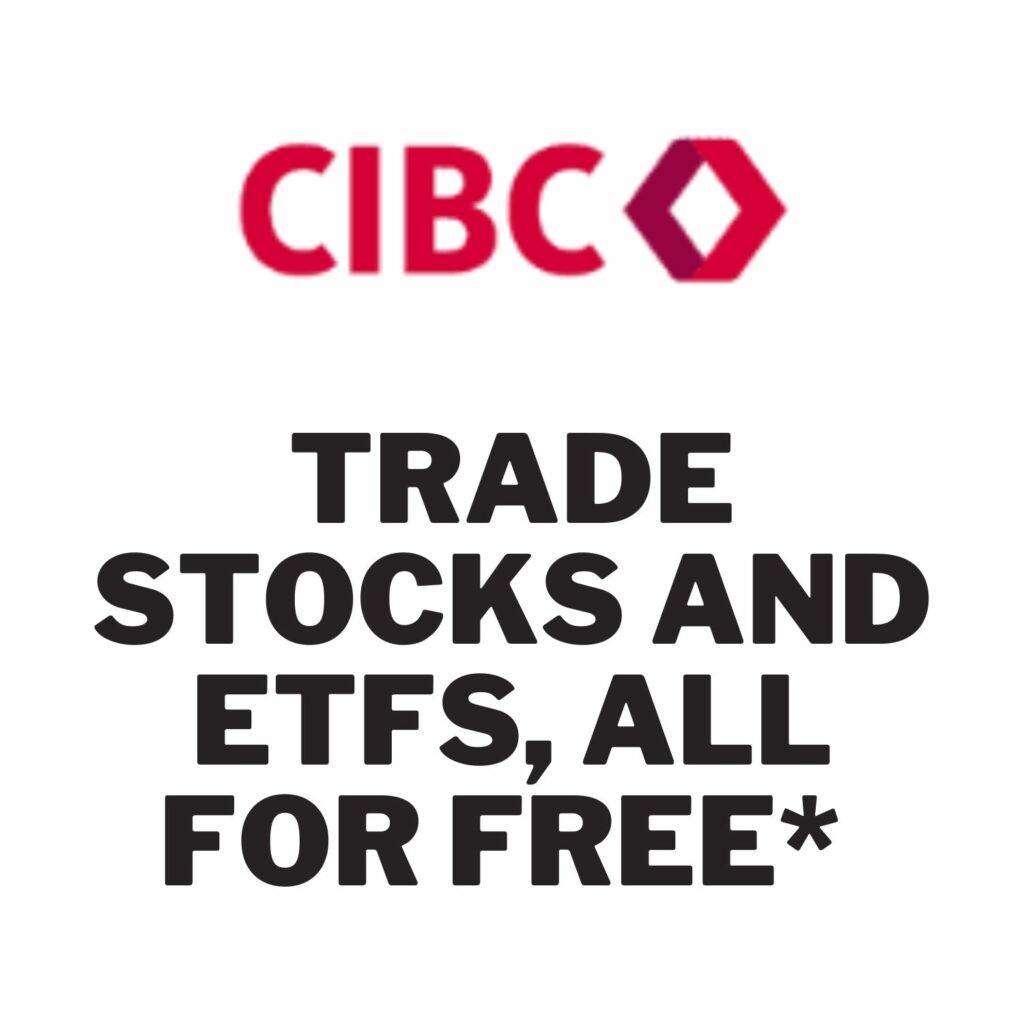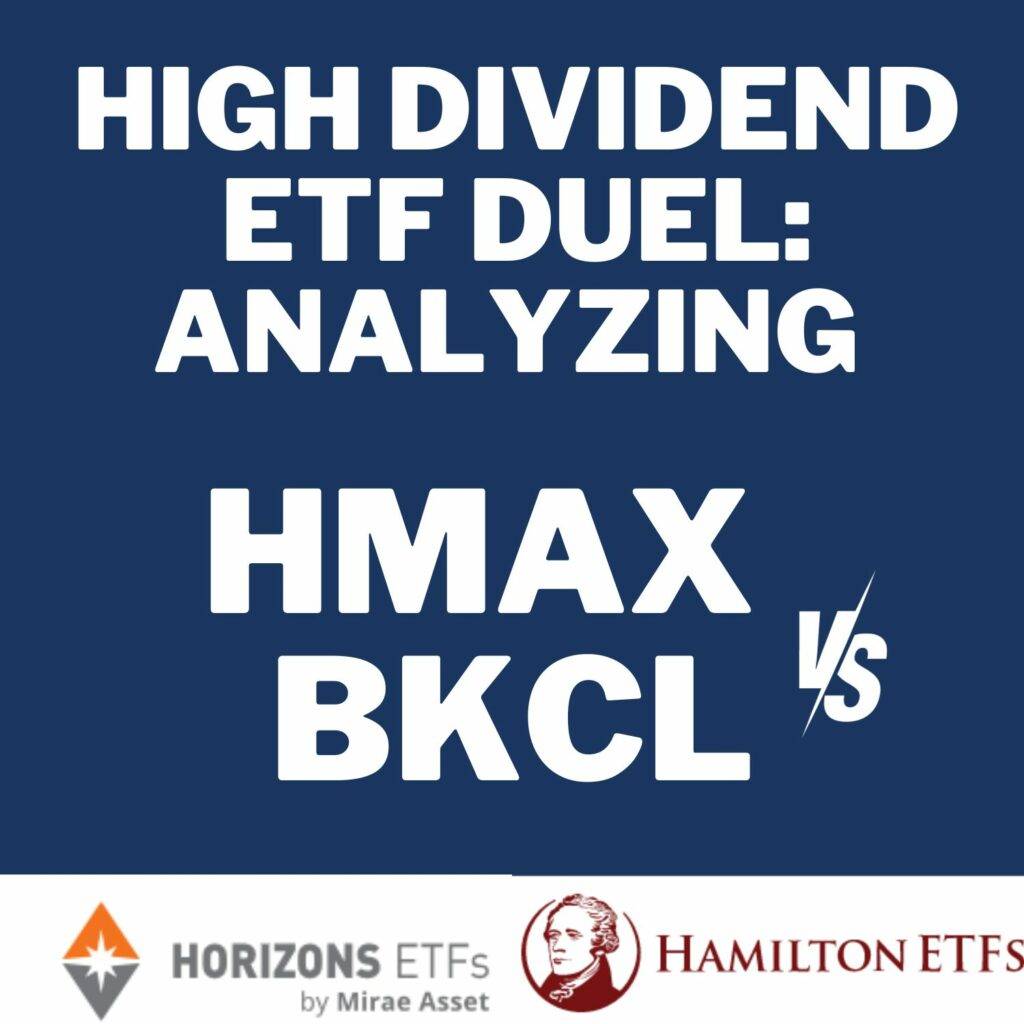In the dynamic landscape of investment opportunities, the HMAX and BKCL ETFs emerge as compelling options for those seeking exposure to the Canadian banking sector with a unique twist—leveraging the power of covered call strategies. Hamilton ETF introduces HMAX, strategically delving into the banking sector with a focus on an attractive dividend yield of 13%. Meanwhile, Horizons Equal Weight Canadian Bank Covered Call (BKCL ETF) mirrors the performance of the Solactive Equal Weight Canada Banks Index, aiming to deliver monthly distributions through a blend of dividends and call options. Join us as we explore the strategies, portfolio allocations, and dividend histories of these two intriguing investment avenues (HMAX vs BKCL).

Executive summary
| Aspect | HMAX (Hamilton ETF) | BKCL (Horizons ETF) |
|---|---|---|
| Strategy | Covered call strategy, writing ATM options | Covered call strategy, writing OTM options |
| % Portfolio | 50% of the portfolio is involved in option strategy | 50% of the portfolio is involved in option strategy |
| Option Type | ATM (At The Money) options | OTM (Out of The Money) options |
| Dividend Yield | Target 13% | Target 15% |
| Leverage | Not applicable (NA) | Controlled ratio of approximately 125% |
| Risk Approach | Higher risk due to ATM options with higher likelihood of exercise | Lower exercise probability with OTM options for risk mitigation |
| Focus | Hybrid model balancing growth and income | Diversification with a controlled leverage strategy |
Investment objective Recap: HMAX vs BKCL
HMAX
This ETF is a new fund offered by Hamilton ETF. The fund invests in the Canadian banking sector. This fund aims to provide an attractive dividend yield (target 13%) using a covered call strategy. The strategy consists of writing call options on (50% of the portfolio) to collect premiums and maximize monthly distributions.
BKCL
The Horizons Equal Weight Canadian Bank Covered Call (BKCL ETF) focuses on diversified exposure to Canadian banks, aiming to replicate the Solactive Equal Weight Canada Banks Index. The fund employs a dynamic covered call strategy, selling options on underlying equities for additional income, acting as a buffer against market downturns. Notably, BKCL utilizes leverage at a controlled ratio of approximately 125%, amplifying performance during growth periods and aligning with the Underlying Index. This distinctive approach combines diversification, income generation, and strategic leveraging for investors seeking a balanced and potentially enhanced investment strategy.
HMAX vs BKCL! comparison
Strategy
| % portfolio | Option strategy | Dividend Yield | Leverage | |
| BKCL | 50% | OTM | 15%* | 1.25 |
| HMAX | 50% | ATM | 13%* | NA |
Covered call strategy – HMAX vs BKCL; * the target yield
HMAX strategically writes options At The Money (ATM), departing from the more common Out of The Money (OTM) approach. This decision is fueled by the higher premiums offered by ATM options, albeit with an elevated level of risk. ATM options increase the likelihood of exercise by the buyer, introducing a nuanced risk-reward dynamic into HMAX’s strategy.
BKCL, on the other hand, opts for OTM call options, where the strike price exceeds the current stock price. This choice aligns with Horizons ETFs’ general practice and aims to provide a buffer against potential market downturns. By selling options with lower exercise probability, BKCL seeks to balance income generation and risk mitigation.
In essence, while HMAX embraces a hybrid model, balancing growth and income, BKCL combines diversification with a controlled leverage strategy, utilizing OTM call options for a nuanced risk approach. The choice between these two ETFs hinges on an investor’s preference for risk tolerance, income generation, and growth potential.
Portfolio allocation
| Big Can Banks | Insurance | Asset Management | |
| BKCL | 100% | – | – |
| HMAX | 76.4% | 14.9% | 10% |
Best High-Interest Savings Account ETFs In Canada (2023)
Dividend history
BKCL Dividend History
| Amount | Ex-Div Date | Record Date | Pay Date | Declare Date |
|---|---|---|---|---|
| 0.2450 | 10/30/2023 | 10/31/2023 | 11/7/2023 | 10/24/2023 |
| 0.2570 | 9/28/2023 | 9/29/2023 | 10/6/2023 | 9/22/2023 |
| 0.2570 | 8/30/2023 | 8/31/2023 | 9/8/2023 | 8/24/2023 |
| 0.2570 | 7/28/2023 | 7/31/2023 | 8/8/2023 | 7/24/2023 |
Review of UMAX: Hamilton Utilities Yield Maximizer ETF (13% Target yield)

HMAX Dividend History
The fund pays monthly dividends. The distributions are paid monthly in cash.
| Amount | Ex-Div Date | Record Date | Pay Date | Declare Date |
|---|---|---|---|---|
| 0.1775 | 10/30/2023 | 10/31/2023 | 11/7/2023 | 10/24/2023 |
| 0.1775 | 9/28/2023 | 9/29/2023 | 10/6/2023 | 9/25/2023 |
| 0.1800 | 8/30/2023 | 8/31/2023 | 9/8/2023 | 8/24/2023 |
| 0.1800 | 7/28/2023 | 7/31/2023 | 8/8/2023 | 7/24/2023 |
- Maximizing Returns with UMAX: Inside Hamilton’s High-Yield Utilities ETF
- VNQ Canadian Equivalent: How Canadians Can Invest in U.S. Real Estate Through ETFs
- 💰 Best Canadian Bank ETFs for Monthly Income
- Comparing VDY vs XEI: Unraveling the Superior High Dividend ETF for Canadian Investors
- Best Utilities ETF in Canada -2025
How had Covered call ETF’s performed historically?
In historical contexts characterized by bear markets, range-bound markets, and moderate bull markets, a covered call strategy has typically demonstrated the ability to outperform its underlying securities. However, during robust bull markets, when the underlying securities experience frequent rises beyond their strike prices, covered call strategies have historically exhibited slower growth. Nevertheless, even in these bullish phases, investors typically realize moderate capital appreciation alongside the accrual of dividends and call premiums.


